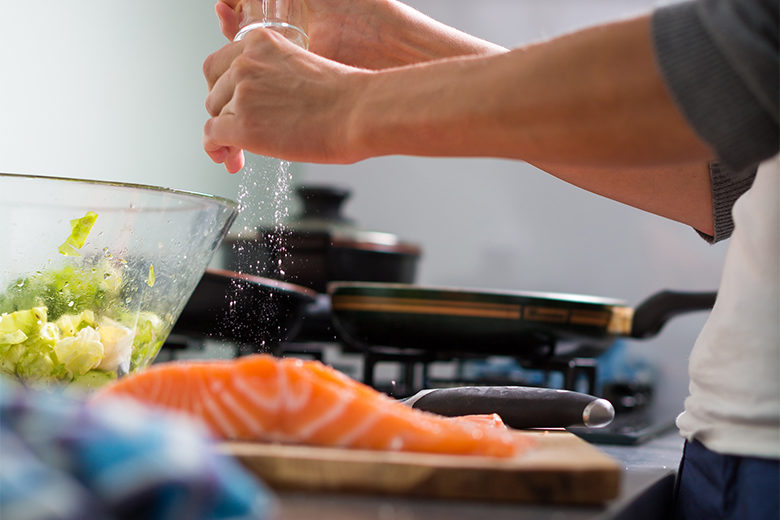
Cooking seafood at home can be a challenge, which is one of the reasons why about two-thirds of all seafood is consumed at restaurants. However, seafood is a good source of lean protein and provides many health benefits. Below are tips on how to properly purchase and prepare the vast array of seafood options at home, and transform you into a seafood connoisseur just in time for summer.
Fresh Fish
Purchasing: Fresh, whole or fileted fish should have a mild, seawater or cucumber odor, with a firm flesh and no signs of browning or discoloration. If you’re buying whole fish with scales, the scales should lay flat and close to the skin without a dry or ruffled appearance.
If you’re buying frozen fish, it should be frozen solid without any signs of ice crystal formation, which is an indicator of thawing and refreezing. Frozen fish should never be thawed at room temperature or refrozen. Thaw it in the refrigerator, in a sealed plastic bag in cold water or in the microwave if it will be cooked immediately.
Cooking: Fresh fish can be cooked many ways. Some of the most popular are grilled, baked or pan-fried. Whole fish requires the longest cooking time, using the guide of 10 minutes of cook time per inch. Measure the thickest part of the fish for reference and flip halfway through the cook time. Fish filets or steaks take about eight to 10 minutes to cook, and all fish should reach an internal temperature of 145°F.
Crustaceans
Purchasing: Live crustaceans such as lobsters and crabs should appear active in tanks to assure freshness. If purchasing frozen, the meat should be frozen solid. If buying prepared, the meat should have a mild odor and opaque color and be sold in the refrigerator section.
Cooking: Steaming is the most popular cooking method for crustaceans, with whole lobsters taking the longest at about 18 to 20 minutes. Live crabs require about 10 to 12 minutes cook time, and shrimp require about four to six minutes. Cooked crustaceans should have bright red shells and flesh should be opaque in color.
Shellfish
Purchasing: Live shellfish such as clams, mussels and oysters should have closed shells with a mild sweet smell. If shells are open, give them a quick tap, which should cause them to close shut. Discard any shells that still remain open. Shellfish should be kept refrigerated in a dry, open pot or bowl until ready to use. Scrub and rinse shells to remove any grit, and soak mussels and clams in fresh water for 20 minutes prior to cooking to expel any additional sand that may be inside.
Cooking: Of all seafood, shellfish take the least amount of time to cook and are most often steamed. They generally take about four to eight minutes to prepare. Shells should be open when cooked, and any shells that remain closed after cooking should be discarded.








